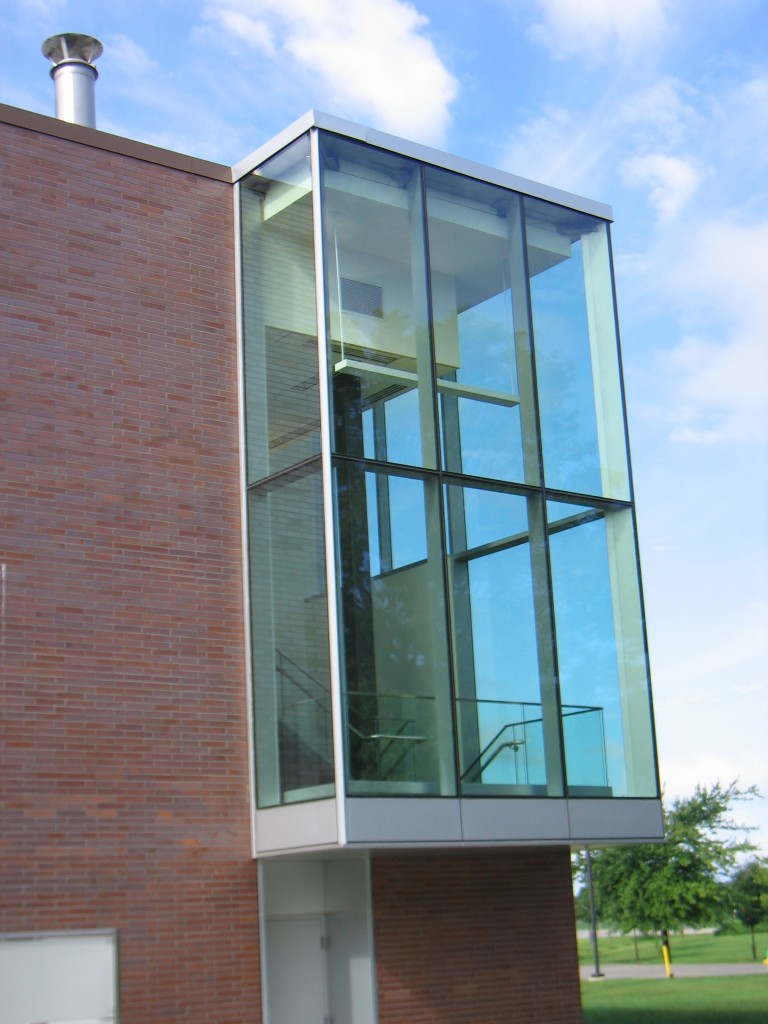v12.07.14
Art, Architecture and Design
This article spotlights a particular building or some other aspect of Columbus design. I welcome your comments, corrections and additions. Please share your experience and perceptions of these uniquely Columbus projects.
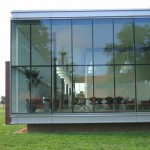 Columbus Learning Center
Columbus Learning Center
- Built: 2005
- Design Architect: Kevin Kennon (Kohn Pederson and Fox – NYC)
- Executive Architect: Ratio Architects, Inc. – Indianapolis
- Construction Project Manager: Taylor Brothers Construction
The Columbus Learning Center (CLC) is part of the educational complex on the Columbus Municipal Airport property. The grounds were once home to the Atterbury Army Air Corp Base / Bakalar Air Force Base and have since been redeveloped as the Columbus airport, as a small industrial park, as an emerging information technology center as well as the home to several institutions of higher education.
CLC was concieved as a community educational resources center and as a way for Indiana University-Purdue University at Columbus (IUPUC), the Purdue School of Technology and Ivy Tech State College to gain immediate access to much needed space by sharing the resources of a new building. The building is intended to serve as a center of lifelong learning. Also as part of the community partnership with the state, the WorkOne Center (unemployment office), part of the Indiana Department of Workforce development was relocated here giving laid off workers and job seekers immediate access to educational resources as well as assistance, assessment and counselling in exploring new careers and educational opportunities here and elsewhere.
Design architect for the project was Kevin Kennon (formerly of Kohn Pederson and Fox). Kevin Kennon has since started his own firm. The name Kennon is no stranger to Columbus as his father Paul Kennon executed several projects here including the AT&T Switching Station and Fodrea Community School. He joins several other father-son architects with projects in Columbus: Eliel & Eero Saarinen and John M. & Christian Johansen. In other family architect connections, Ben Weese worked closely with brother Harry on several of his many Columbus projects. Kevin Kennon had accompanied his father on numerous trips to Columbus and had often said that it was Columbus that convinced him to follow in his fathers footsteps as an architect. Upon being granted the commission Kennon said,
“Columbus has left an indelible impression on my life and I am proud to be a part of it’s legacy”.
Kevin Kennon grew up in a world immersed in architecture as the family often accompanied their father in trips around the world and met many famous architects along the way. He made the first of several trips to Columbus at the age of 5. Paul Kennon died in 1990.
Space for the project was in an open area between the IUPUI/Purdue building and Ivy Tech State College. Kennon initially thought to bridge the two buildings physically but both sides wanted to keep a distinct separation so the connection is purely symbolic. One of the biggest hurdles in getting state approval for funding was to force the three entities to cooperate in how they were going to share library space, lecture hall and classrooms and most importantly the buildings high tech computer network. It helped lead to a new era in cooperation between the state’s four year universities and the typically two year programs at Ivy Tech as many more Ivy Tech credits are now directly transferable to appropriate degree programs. A ongoing process during the design and construction phase was to keep the building within the tight budgetary guidelines. Close collaboration with Taylor Brothers Construction, Ratio Architects and Kennon/KPF maintained the spirit of strength and openness that Kennon was seeking but many compromises were necessary. After the design phase was complete, the state pulled funding for the project but it was eventually restored and the project finally began with Ratio Architects overseeing the construction by Taylor Brothers Construction Co. Repp and Mundt, Inc. performed the masonry/brick work laying 291,000 bricks around the structure. Norman bricks were chosen which are about 4 inches longer than normal.
CLC is a 130,000 foot semi-circular building with a glass wall on the one side and a primarily brick face on the other. It is a two story building but has a horizontality due the low-slung massing which helps minimize the physical as well as psychological distance between the different institutions. As a strictly commuter campus, there was an attempt made to provide study space and communal student relaxation space to encourage more traditional collegiate interaction. The new student spaces also provides a mingling of school cultures that didn’t exist in their separate buildings.
A glass enclosed “Main Street” provides a natural flow thru the building directly linking the corridor to all parts of the building. The building is open to the public as it serves several community functions enabling a interactivity between the students and the general public. Major destination points such as the library, lecture hall/auditorium and meeting rooms are located at points on either end to encourage movement through the building. A ramp system and stairway in the middle of the glass arcade allows easy physical and visual access to both levels. The building was designed to be flexible and easily re-configurable as needs change. A two-foot raised plenum floor system allows space for the cabling for the extensive computer networking as well as mechanical distribution throughout the building. The building is extremely high tech with over 350 computers located in the library, classrooms and several “e-mail bars”. Classrooms are equipped with computer presentation equipment. All spaces in the building were designed to support state of the art technology and various types of teaching and meeting options.
Space was set aside at various places along the corridor interior for rotating displays of the work of local and regional artists. Several prominent pieces were commissioned especially for the building. The idea was to place the students and the general public in close proximity to art rather than segregating it to a specific gallery space that would have little traffic.
The design of the two-story building is inspired by the surrounding Columbus landscape: farmhouses, factories, and silos. It also alludes to the educational nature of the building, a composition of geometric forms: cylinders, squares and rectangles and curves. Each program component for the building housed in a distinct brick and glass form, their shapes influenced by the functions contained within. The main entryway to the building has brick walls reaching out like arms forming an outdoor room to welcome students and the community. The building goal is to capture people who are out of the educational system, bring them into a welcoming environment and help them develop their own personal curriculum. As you enter at the main entrance you see immediately ahead the glass walled corridor and the landscaping and buildings beyond. Even the CLC building itself is a view as you see the gently curving exterior of the building and the large glassbox housing the library at the other end.
One unique part of the building is the cylindrical shaped 2 story atrium (sometimes referred to as the “silo”) between the main entrance, the 205 seat auditorium/lecture hall and the 95 seat student commons. Several works of art were specifically selected or commissioned for the space. A sculpture called “Self-Made Man” by Bobbi Carlyle was donated in honor of John T. Hackett. A very unique work by glass artist Dale Chihuly is mounted at the top of the atrium entitled “Sun Garden Panels in Suspended Circle” was donated by the Richard Johnson Family.
The building is actually owned by the City of Columbus through the Columbus Board of Aviation Commissioners who oversee any tenants and operations in the airport area. The building is managed by the Community Education Coalition (CEC). The CEC is a partnership of education, business and community stakeholders focused on aligning and integrating our community based educational programs with economic development and improvement of the quality of life in Columbus. The Center for Teaching and Learning (CTL) was established by the CEC and based in the building providing resources and support to teachers in the community from pre-school through college level as well as adult continuing education programs. The CTL also operates the Learning Center library which is shared by all students on the campus as well as being open to the community.
Keven Kennon’s design for the Columbus Indiana Learning Center won a 2001 New York City AIA Project Design Award. The building was finished in June of 2005 and officially dedicated on September 16, 2005 with Kevin Kennon present. Dignitaries in attendance included Indiana Governor Mitch Daniels.
Photos
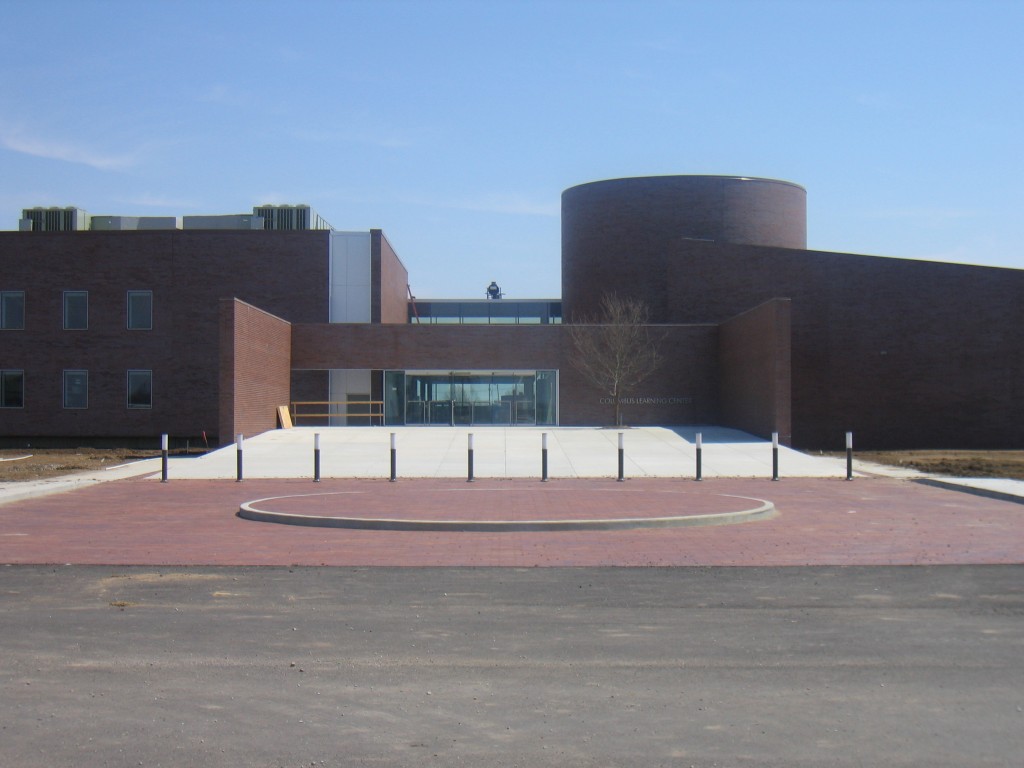 Front Entrance…..(photo by Ricky Berkey)
Front Entrance…..(photo by Ricky Berkey)
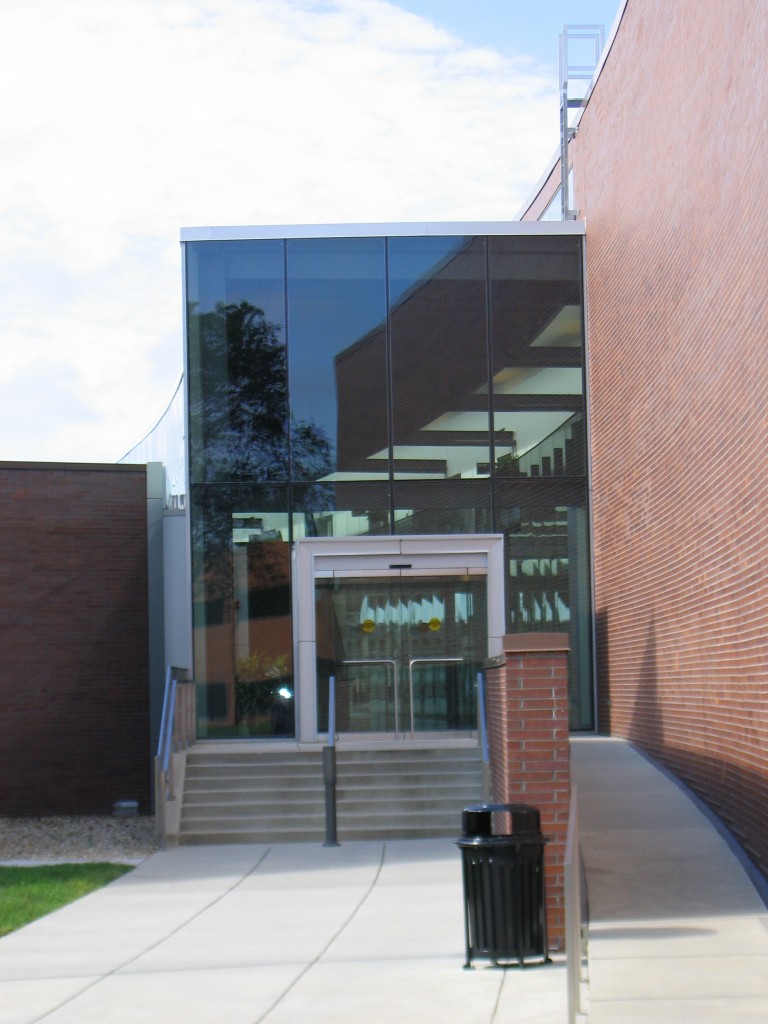 Entry near IUPUC…..(photo by Ricky Berkey)
Entry near IUPUC…..(photo by Ricky Berkey)
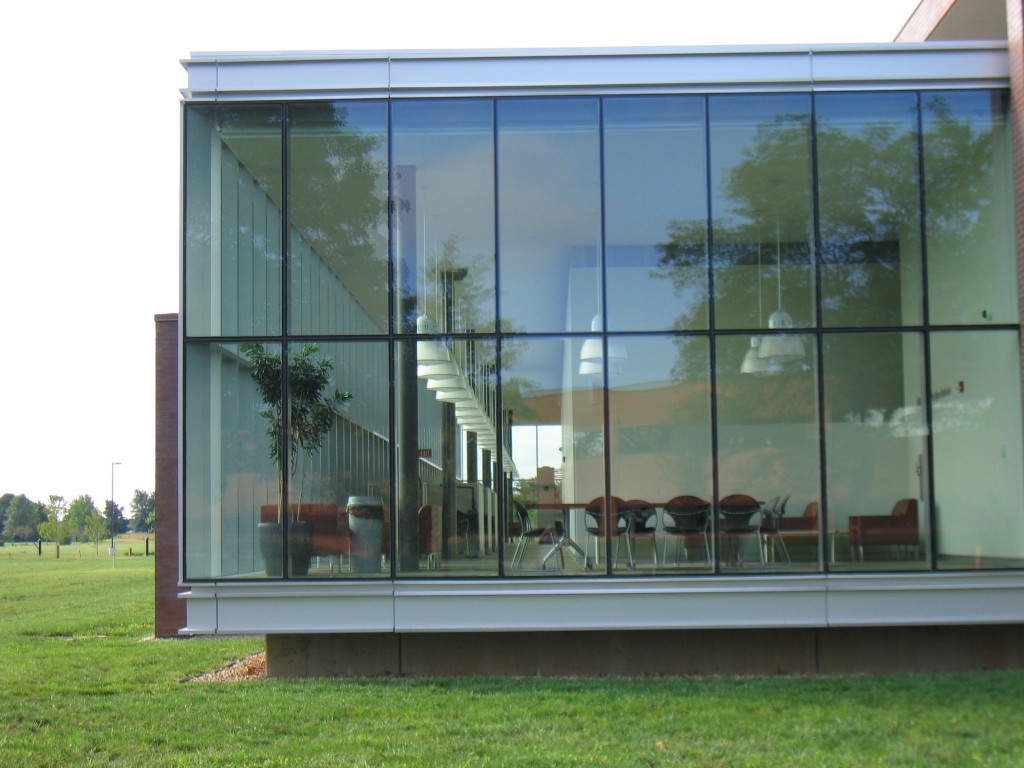 Library building, note the cantilevering around the bottom which is found around most of the building…..(photo by Ricky Berkey)
Library building, note the cantilevering around the bottom which is found around most of the building…..(photo by Ricky Berkey)
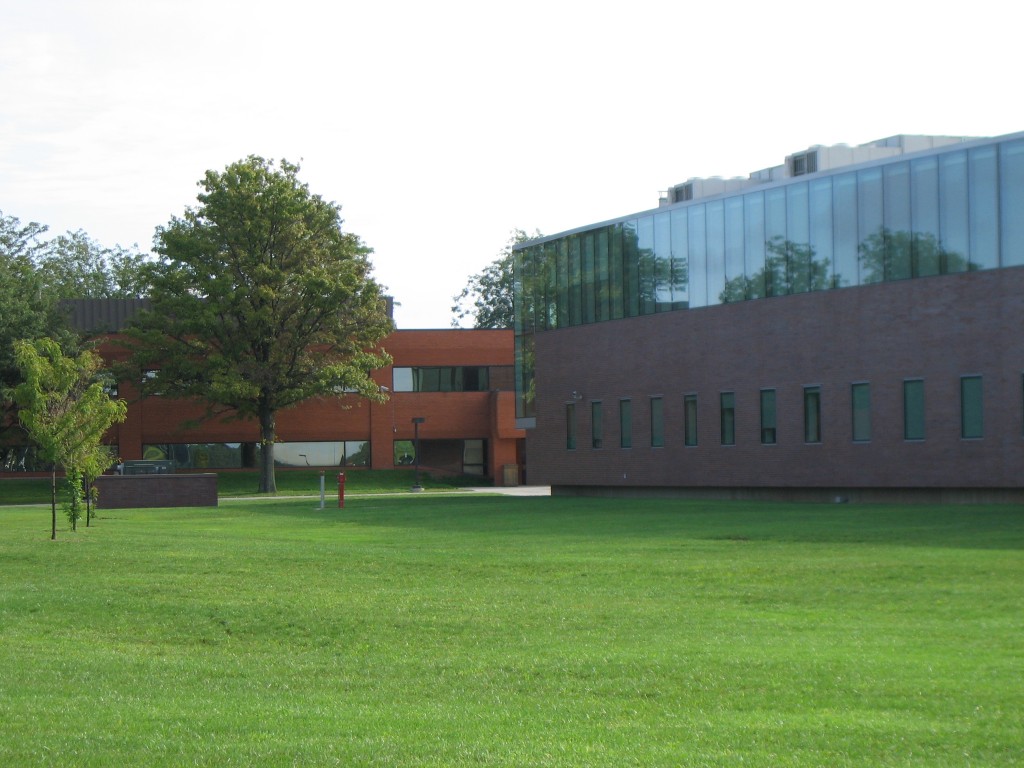 IUPUC building on the left, Learning Center on right…..(photo by Ricky Berkey)
IUPUC building on the left, Learning Center on right…..(photo by Ricky Berkey)
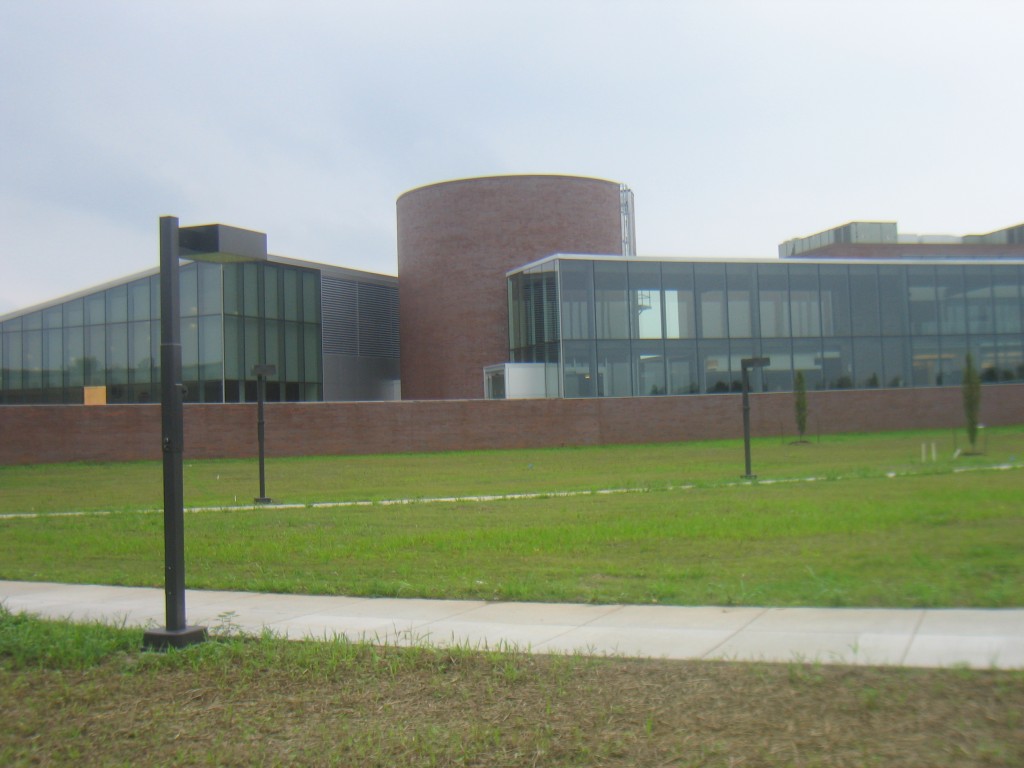 Student Commons on left, Atrium, “Main Street” on the right…..(photo by Ricky Berkey)
Student Commons on left, Atrium, “Main Street” on the right…..(photo by Ricky Berkey)
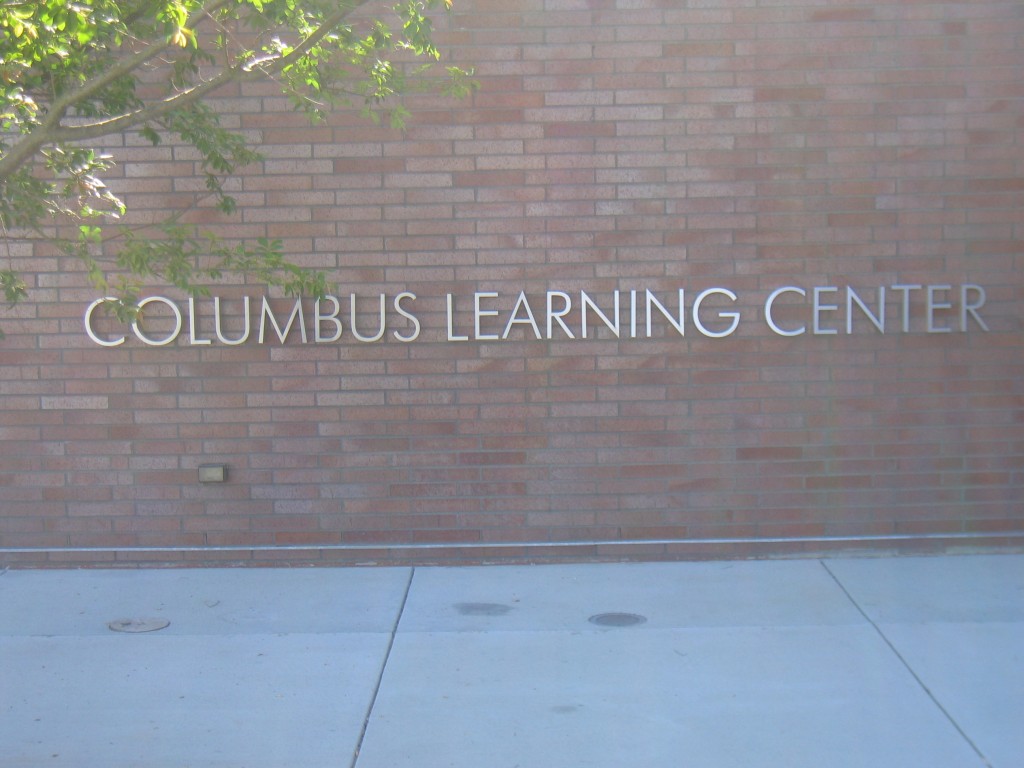 Near Front Entrance showing the elongated Norman bricks…..(photo by Ricky Berkey)
Near Front Entrance showing the elongated Norman bricks…..(photo by Ricky Berkey)
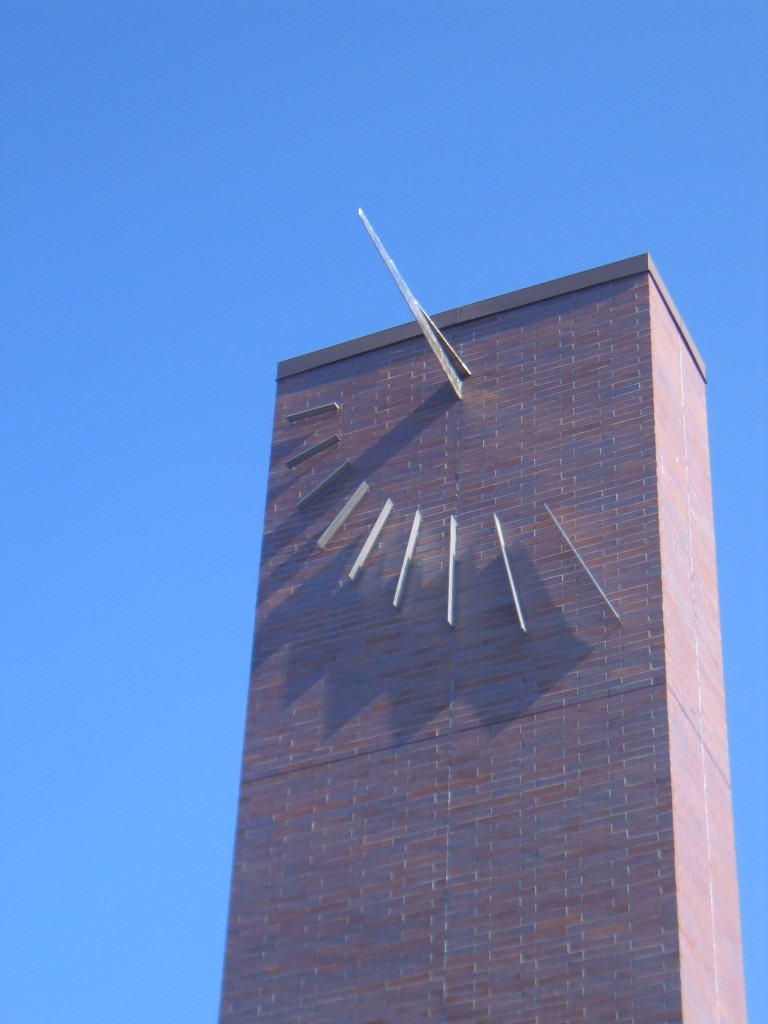 Clock tower features a sundial!…..(photo by Ricky Berkey)
Clock tower features a sundial!…..(photo by Ricky Berkey)
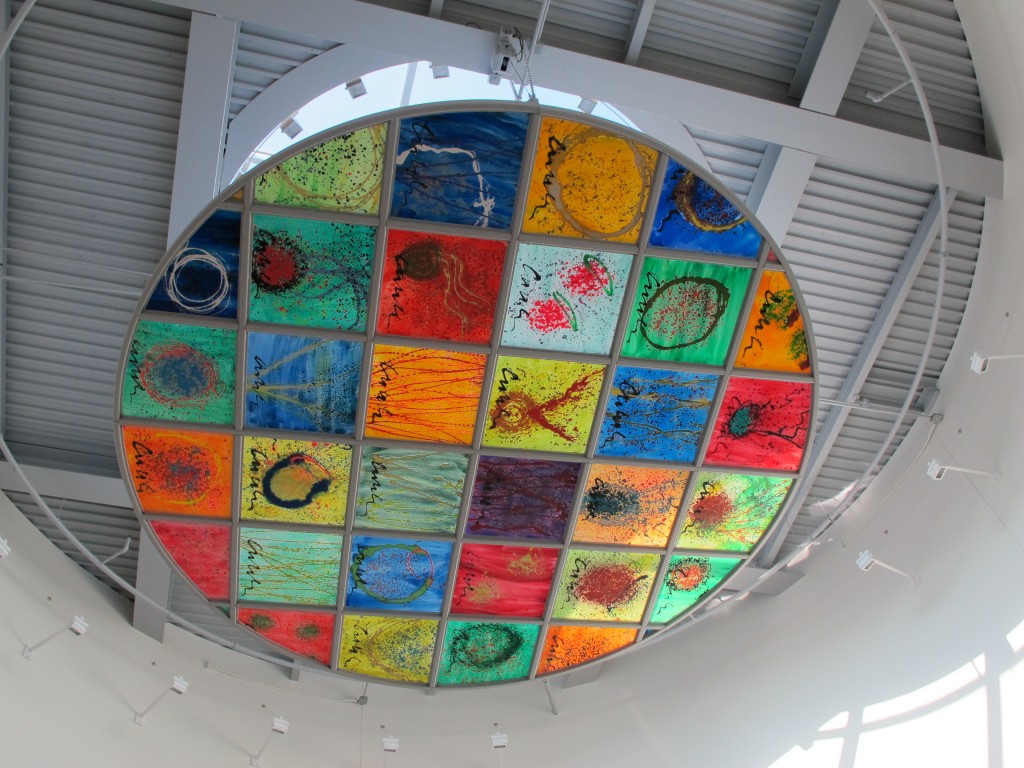 Dale Chihuly piece in the skylight of the atrium…..(photo by Ricky Berkey)
Dale Chihuly piece in the skylight of the atrium…..(photo by Ricky Berkey)
The Architects
 Kevin Kennon
Kevin Kennon
- Born in Palos Verdes, California on July 12, 1958
- Amherst College (1980)
- Princeton, University (1984)
Kevin Kennon is the son of Paul A. Kennon, an award-winning architect who also served as dean of the School of Architecture at Rice University. Kennon graduated from Amherst College and pursued his architectural studies at Princeton.
After several years with Agrest and Gandelsonas Architecture and I.M. Pei and Partners, Kennon joined Kohn Pederson and Fox as a principal design architect and partner in 1988. He left to form his own firm, Kevin Kennon Architects in New York City in 2002. Although given relative autonomy as a design principal and partner at KPF, Kennon felt increasingly uncomfortable in the world of corporate architecture. Predictably, the Columbus Learning Center is featured on the KPF website along with their many projects but doesn’t mention Kennon as the primary architect, work that he did while still at KPF.
Kennon has taught at Yale, Princeton, the Cooper Union and Columbia and has lectured at numerous institutions. He has also served as the executive director of the Institute for Architecture and Urban Studies since 2001 and is the executive director of the Paul Kennon Memorial Symposium at Rice University.
In a collaboration outside his own firm, Kennon was a founding principal in United Architects, a group of architects brought together to compete in the 2002 World Trade Center design competition. This collaboration between David Rockwell, Elizabeth Diller, Ricardo Scofidio and Kennon didn’t win the design competition but they were tasked with designing and building a temporary viewing platform at Ground Zero to answer the public need at the disaster site for a dignified, reverent and accessible way for citizens to gather and view the aftermath of the bombing.
Kennon has won over 30 major design awards and has work included in the permanent collection of the Museum of Modern Art.
Selected Kevin Kennon Projects
1999: Rodin Museum, Samsung Headquarters Plaza – Seoul, Korea
2000: 745 Seventh Avenue (built for Morgan Stanley Dean Witter) – NYC
2001: Sotheby’s World Headquarters – NYC
2005: Amex Building renovation/addition – NYC
2005: Columbus Indiana Learning Center – Columbus, Indiana
 Kohn Pederson and Fox
Kohn Pederson and Fox
Kohn Pederson and Fox is one of the world’s largest architectural firms and has completed projects around the world. KPF was founded in 1976 by A. Eugene Kohn, William Pedersen and Sheldon Fox in New York City. In their original structure Kohn acted as the firms chairman and marketer, Pederson acted as the principal designer and Fox acted as project manager. The practice has grown from the founding 3 to over 400 employees with current offices in New York, London and Tokyo. William Pederson and A. Eugene Kohn remain active in the firm while Sheldon Fox has retired.
Selected Kohn Pederson Fox Projects
1983: 333 Wacker Drive – Chicago
1986: Procter & Gamble Headquarters – Cincinnati
1992: Chicago Title and Trust Building – Chicago
1993: Buffalo Niagara International Airport – Buffalo. New York
1993: Federal Reserve Bank of Dallas – Dallas, Texas
1995: Foley Square U.S. Courthouse – NYC
1997 – IBM World Headquarters – Armonk, New York
Historic Columbus

This was the Air Force Administration building which was later extensively remodeled by local architect Frank Adams into the present IUPUC building. It is directly to the left of the Columbus Learning Center.
Links/References
Community Education Coallition – manages the Learning Center building
Center for Teaching and Learning
Indiana University/Purdue University at Columbus (IUPUC)
Ivy Tech Community College – Columbus
Purdue College of Technology – Columbus
Bartholomew Consolidated School Corporation – our Columbus area K-12 school sytem
Kevin Kennon – Architecture Tailored (Design Document 16) – monograph on the career of Kevin Kennon
City of Columbus: official City of Columbus website
Columbus Indiana Architectural Archives
Columbus Indiana Architecture Digital Archives: A small portion of the Columbus Indiana Architectural Archives available online from the IUPUI digital library
3D Models of Columbus Architecture Executed in Google SketchUp:
The Republic Newspaper – Columbus, Indiana newspaper
Bartholomew County Public Library
Historic Columbus Website – David Sechrest’s tribute to Columbus History
Historic Columbus Message Board – a companion interactive forum to the David Sechrest historical website
Bartholomew County Historical Society
 Click HERE for a Calendar of Upcoming Events in the Columbus Area.
Click HERE for a Calendar of Upcoming Events in the Columbus Area.
Click HERE for information about Tours of Columbus Architecture and Design including the Miller House.
 Ricky Berkey
Ricky Berkey
Email me: rickyberkey@gmail.com

